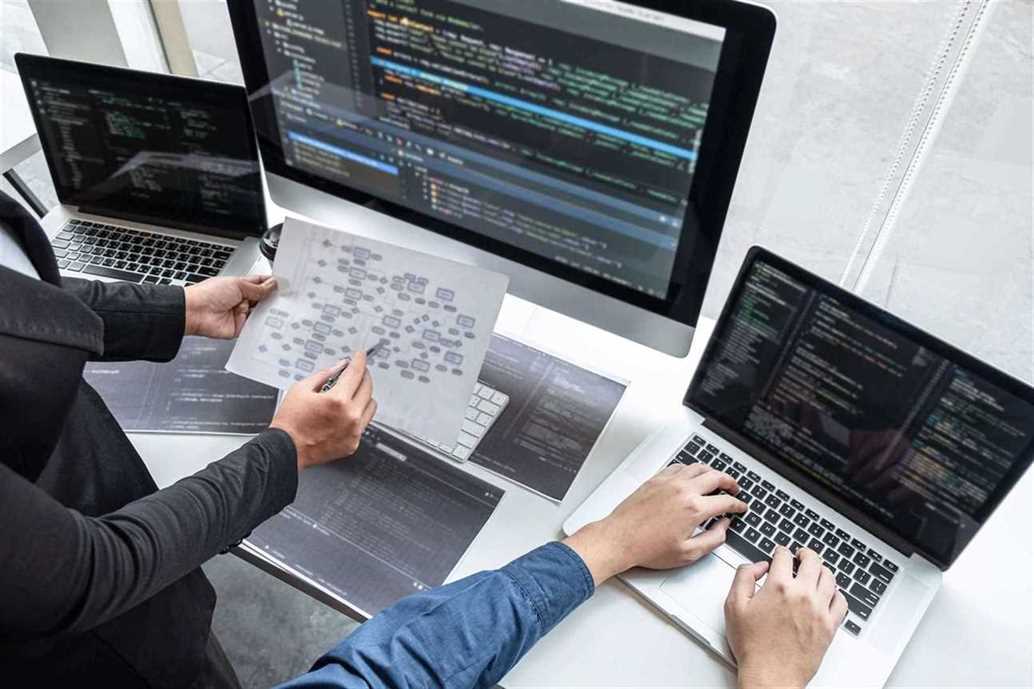Industrial companies build their reputations based on the quality of their products, and innovation is key to continued growth. Winning companies are able to quickly understand the root causes of different product issues, solve them, and integrate those learnings going forward. As a result, systems are redesigned with each new project but overlook opportunities to reuse parts, driving up costs and increasing supply chain complexity. In addition, engineers can face significant rework on projects from not fully understanding interdependencies across the system. Scot joined AWS in July 2018, where he now manages the manufacturing industry marketing efforts.
- Computer vision helps manufacturers with detection inspection via automated optical inspection (AOI).
- Many original equipment manufacturers are pushing requirements down their supply chain and the smaller manufacturers are in a bind.
- The program would then investigate every scenario before presenting a list of the top options.
- Hundreds of variables impact the production process, and while these are challenging for humans to examine, machine learning models can forecast the effects of individual variables in these challenging circumstances.
- Our AI services and applications for manufacturing helps to achieve smart manufacturing operations and reduce cost overheads.
For example, research and design costs for the development of a chip increased from about $28 million at the 65 nanometer (nm) node to about $540 million at the leading-edge 5 nm node (Exhibit 1). Meanwhile, fab construction costs for the same nodes increased from $400 million to $5.4 billion. A network-based representation of the system using BoM can capture complex relationships and hierarchy of the systems (Exhibit 3). This information is augmented by data on engineering hours, materials costs, and quality as well as customer requirements.
Predictive Analytics for Demand Forecasting
Gathering data from physical environments not designed with data gathering in mind always makes for time-consuming business challenges leading to imperfect solutions. Usually, such machines in continued use today are slow, bulky, and only remain in use to save money on a replacement in many cases. Not just that, but such solutions let managers monitor the current machine status of all their systems. By tracking data in real time like this, they can imitate real-time responses, as well as quickly understand the forecasted state of damage.

This ability to predict buying behavior helps ensure that manufacturers are producing high-demand inventory before the stores need it. Adopting MLOps also automates the model training and deployment process, reducing workload and contributing to building scalable systems. It supports activities such as assessing the quality of data, tracking performance metrics, and conducting experiments and A/B tests to contribute to the optimization of manufacturing processes and outputs. Our advanced artificial intelligence mobility solutions also improve employee productivity. We are experts in developing AI-powered solutions that tackle equipment maintenance and warehouse management. Our AI app development team with deep knowledge of AI technologies creates futuristic AI-powered mobility solutions that help businesses transform the traditional manufacturing operations.
Out-of-the-Box Applications of AI in Manufacturing
Many original equipment manufacturers are pushing requirements down their supply chain and the smaller manufacturers are in a bind. You have this pressure but don’t have the resources to implement the technologies. Between the MEP Centers in every state and Puerto Rico and our 1,400 trusted advisors, the MEP National Network offers assistance within a two-hour drive of every U.S. manufacturer. When you call your local MEP Center, you’ll speak to seasoned manufacturing professionals who understand SMMs. Some have owned a manufacturing company, so they understand the language you speak, and the challenges you face.
Generative AI to Boost Manufacturing Efficiency ASSEMBLY – Assembly Magazine
Generative AI to Boost Manufacturing Efficiency ASSEMBLY.
Posted: Mon, 16 Oct 2023 13:00:00 GMT [source]
A robot developed in just two and a half days successfully completed this task, opening and printing documentation as it was required, freeing up the operators. If a car manufacturer is seeing warped steering wheels at the end of their assembly line, one of their machines might be overheating. Whatever the diagnosis, they’ll be making determinations based on censor, streaming, and particularly visual data to help answer that question. According to a recent report from Gartner, 36% of CIOs at heavy manufacturers who reported a recent disruption in their industry said their operating cost competitiveness was falling behind. In another assessment from Accenture, 95% of industrial equipment executives think the industry is facing at least moderate disruption – with 21% attesting to “complete” disruption in their sector.
Remarkable Use Cases of AI in Manufacturing
The ultimate goal of the digital twin is to design and test equipment virtually. Similarly, cloud and the IoT sensors are also playing a vital role in modernizing the manufacturing industry. They embedded in machinery to better predict the maintenance and overcomes equipment issues that have to occur in the future. To embark on this journey of AI transformation in manufacturing, consider enrolling in our BB+ Program. This program offers comprehensive insights and practical strategies for successfully implementing AI solutions, enabling you to unlock the full potential of AI and drive your manufacturing processes into the future. Since AI-powered machine learning systems can encourage inventory planning activities, they excel at handling demand forecasting and supply planning.

The forecasting process addressed a variety of fresh products united by such factors as short shelf life and dynamic demand. Capturing both sales and demand stories of these products, the provider defined insufficient stock periods and analyzed how to fix these issues in future demand planning. Generative design uses machine learning algorithms to mimic an engineer’s approach to design.
Please confirm the appointment time and click Schedule.
It proves valuable in following product standards and compliance, which is essential to avoid problems like fines, legal actions, and unhappy customers. A pivotal component of predictive maintenance is the digital twin—an online replica of a physical asset. It captures real-time data and mimics its actions in a virtual setting. We are living in the Fourth Industrial Revolution (also known as Industry 4.0), marking the rapid transformation of all manufacturing processes.
The challenge is how to equip less experienced operators with the knowledge required to keep complex production operations running efficiently, and how to maximize production, quality, and machine availability. As an example, take a machine that continues to break down, causing unplanned downtime. In the absence of experienced engineers and operators, generative AI holds real promise in production environments to maximize OEE. By analyzing enormous amounts of data to spot bottlenecks, inefficiencies, and improvement opportunities, AI streamlines manufacturing processes. In order to attain better output levels with less resource consumption, machine learning algorithms can determine the best production parameters, such as speed, temperature, and material utilization.
Design customization
This streamlined communication process significantly reduces response time, ensuring timely resolutions to operational challenges. Over time resolutions can be suggested directly to the operator by the AI using the approach demonstrated in paragraph #1. Internet of Things is a term used to describe a dynamic global network of connected physical objects embedded with software, sensors, or other technologies exchanging data with other devices. The basic elements AI in Manufacturing of IoT include a central control hardware, multiple connected devices, data cloud, and user interface. Manufacturers are likely to exhibit greater trust in DT in the future, as more and more industry giants such as Microsoft, Dell, and GE Digital decided to join the Digital Twin Consortium. This collaborative partnership is dedicated to the potential growth of DT development in the future, enabling the establishment of an extensive versatile ecosystem.

In his free time, he enjoys binge-watching time-travel movies and listening to Linkin Park and Coldplay albums. Working alongside their supplier, this system analyzes the images to identify signs of failing robotic components. A successful test run saw it catch 72 instances of component failure across 7,000 robots. Engineers input parameters and goals, and AI generates multiple design options, expediting design iterations for innovative products. Now, the Fourth Industrial Revolution is being shaped by cyberphysical systems—intelligent computational capabilities.
RPA tackles tedious tasks
Testing those solutions with machine learning can determine the most effective approach. Artificial intelligence (AI) in manufacturing refers to a machine’s ability to think like a human, respond independently to internal and external events, and anticipate future occurrences. When a tool wears out or something unexpected—or perhaps even something unexpected—happens, the robots can recognize it and take action to fix the issue.
